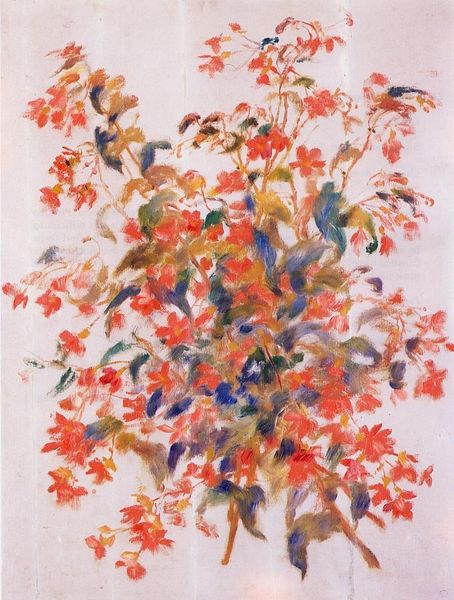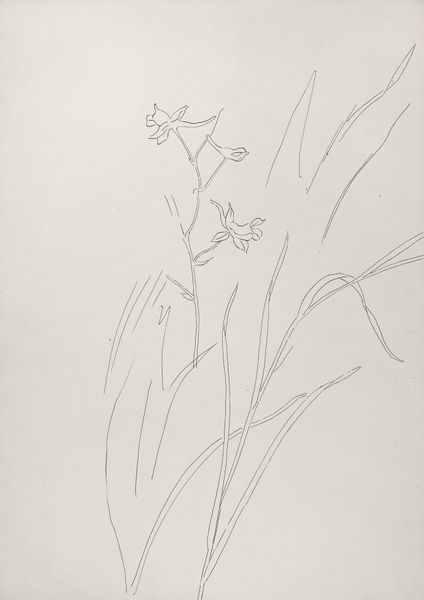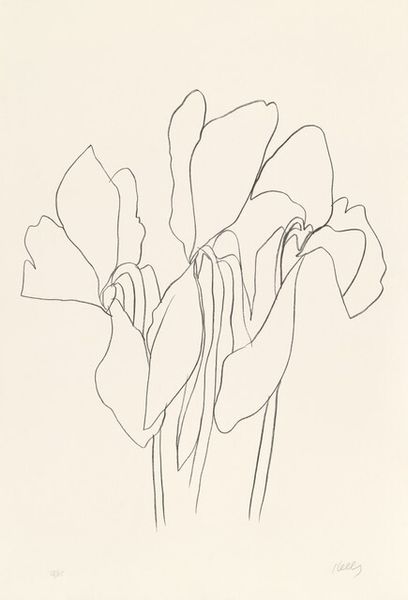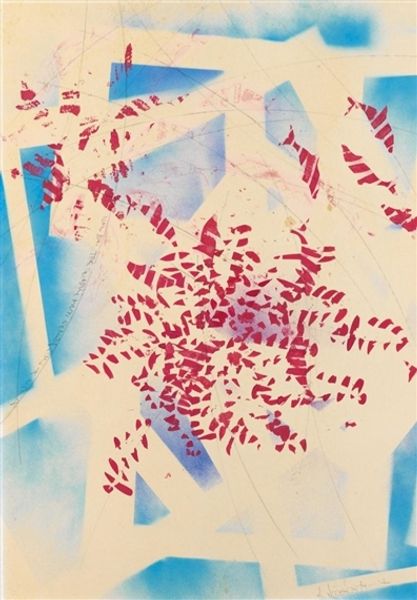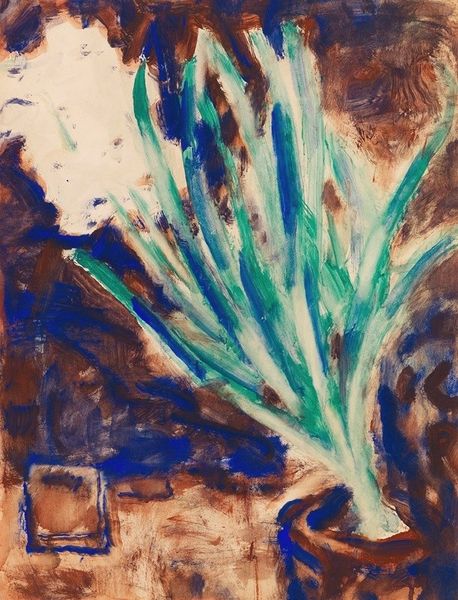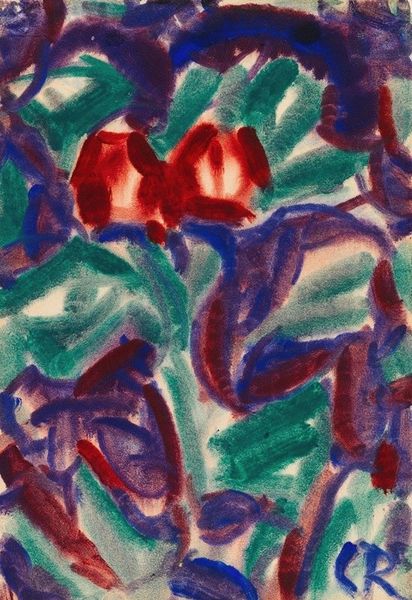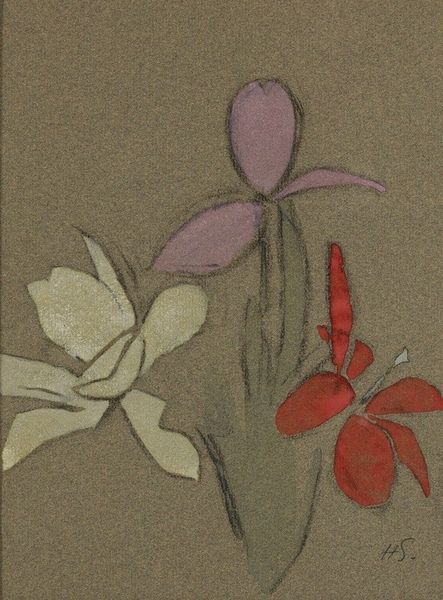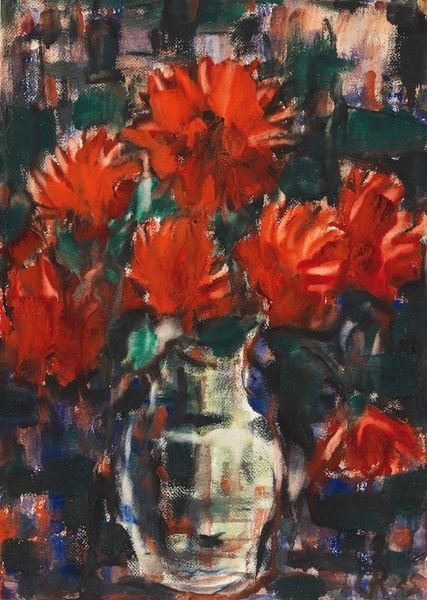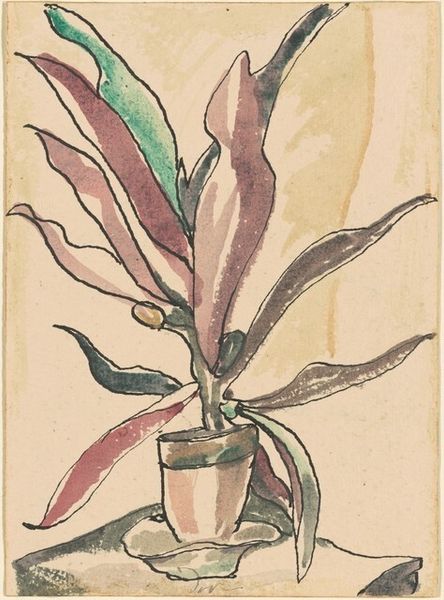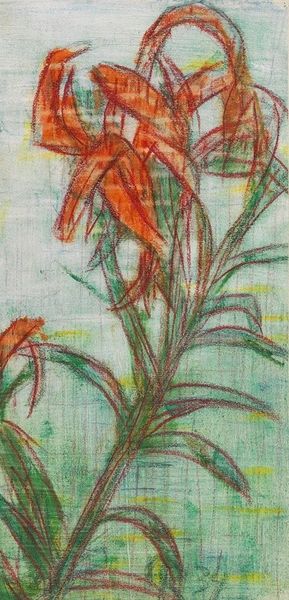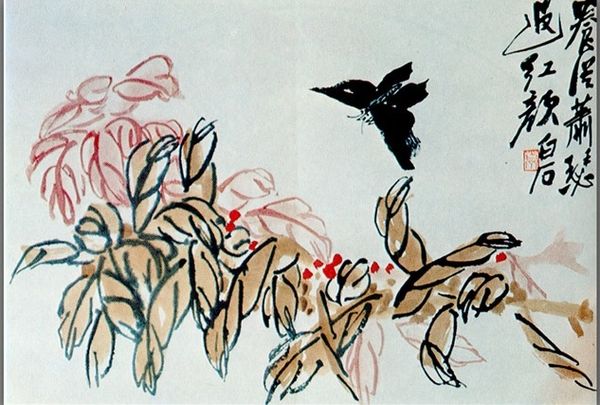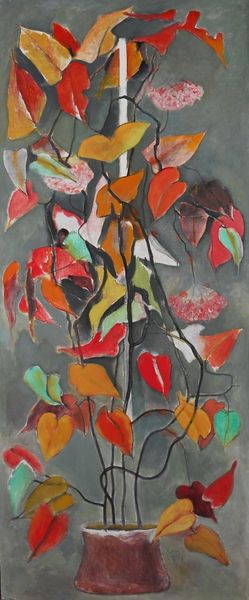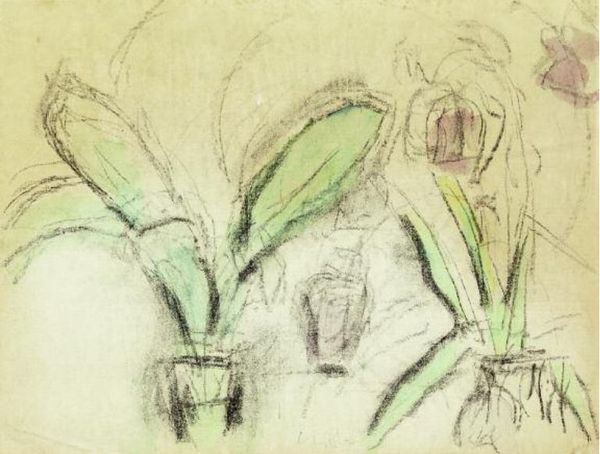
Copyright: Public Domain: Artvee
Editor: This is “Roter Amaryllis,” or Red Amaryllis, a watercolor and drawing created in 1931 by Christian Rohlfs. The flower seems to leap off the page with its bright, bold color, yet the visible pencil marks give it an unfinished, almost vulnerable feel. What strikes you most about it? Curator: The layering of materials here is significant. Rohlfs doesn't conceal the artistic process. We see the pencil sketch *underneath* the watercolor washes, almost as if documenting the flower's "construction." What does this deliberate visibility suggest about Rohlfs's approach to representation, and potentially the relationship between artist, subject, and the viewer who's "consuming" it all? Editor: So you’re saying it’s not just *what* he’s painting but *how* he’s painting it that matters? The medium is the message? Curator: Precisely. And think about the Expressionist movement he’s associated with. The immediacy of watercolor allows for spontaneity, but the underlying structure – the labor of drawing – is never erased. How might this interplay between spontaneity and labor relate to broader social concerns of the time? Editor: I guess it speaks to the artist’s active hand, even in capturing something as seemingly passive as a flower. Like he's claiming ownership of its image through the obvious crafting. Curator: Yes! The work embodies both an expressive burst of color and the clear, methodical marks of its production. The materials become part of the meaning, showcasing the artist’s choices. Now, given the socio-economic conditions in 1931 Germany, what readings might you propose about these "choices," regarding access, process, and distribution? Editor: That's a lot to think about, but seeing how the materiality becomes part of the message gives me a completely different way to view Expressionism beyond just "expressing emotions.” Curator: Indeed, we can see that in even the humblest art. Thanks for sharing that idea.
Comments
No comments
Be the first to comment and join the conversation on the ultimate creative platform.
